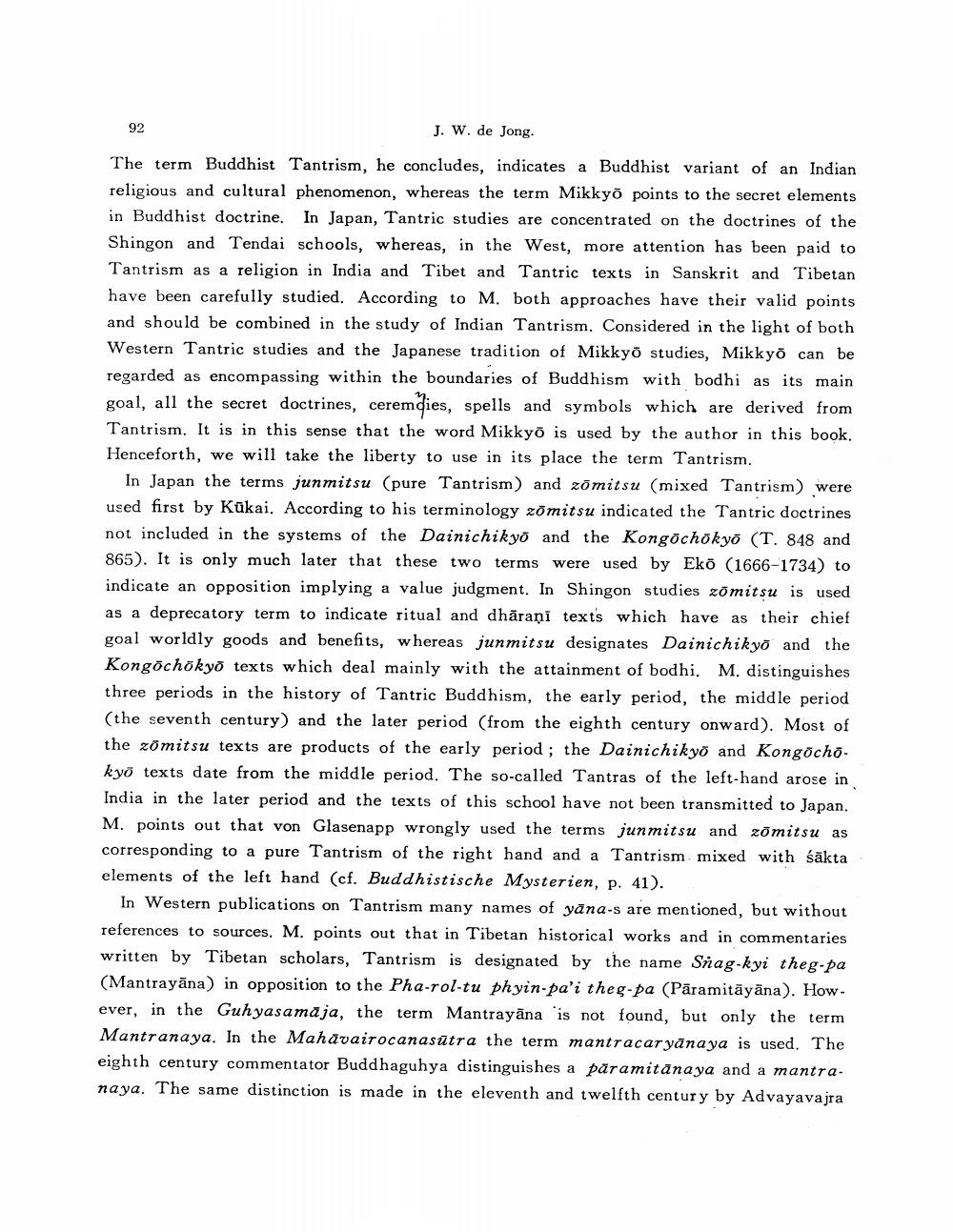Book Title: New History Of Tantric Lieterature In India Author(s): J W De Jong Publisher: J W De Jong View full book textPage 2
________________ 92 J. W. de Jong The term Buddhist Tantrism, he concludes, indicates a Buddhist variant of an Indian religious and cultural phenomenon, whereas the term Mikkyo points to the secret elements in Buddhist doctrine. In Japan, Tantric studies are concentrated on the doctrines of the Shingon and Tendai schools, whereas, in the West, more attention has been paid to Tantrism as a religion in India and Tibet and Tantric texts in Sanskrit and Tibetan have been carefully studied. According to M. both approaches have their valid points and should be combined in the study of Indian Tantrism. Considered in the light of both Western Tantric studies and the Japanese tradition of Mikkyo studies, Mikkyo can be regarded as encompassing within the boundaries of Buddhism with bodhi as its main goal, all the secret doctrines, ceremdies, spells and symbols which are derived from Tantrism. It is in this sense that the word Mikkyo is used by the author in this book. Henceforth, we will take the liberty to use in its place the term Tantrism. In Japan the terms junmitsu (pure Tantrism) and zomitsu (mixed Tantrism) were used first by Kūkai. According to his terminology zömitsu indicated the Tantric doctrines not included in the systems of the Dainichikyo and the Kongochokyo (T. 848 and 865). It is only much later that these two terms were used by Eko (1666-1734) to indicate an opposition implying a value judgment. In Shingon studies zāmitsu is used as a deprecatory term to indicate ritual and dhāraṇi texts which have as their chief goal worldly goods and benefits, whereas junmitsu designates Dainichikyo and the Kongochōkyō texts which deal mainly with the attainment of bodhi. M. distinguishes three periods in the history of Tantric Buddhism, the early period, the middle period (the seventh century) and the later period (from the eighth century onward). Most of the zomitsu texts are products of the early period; the Dainichikyo and Kongochokyo texts date from the middle period. The so-called Tantras of the left-hand arose in India in the later period and the texts of this school have not been transmitted to Japan, M. points out that von Glasenapp wrongly used the terms junmitsu and zomitsu as corresponding to a pure Tantrism of the right hand and a Tantrism mixed with sākta elements of the left hand (cf. Buddhistische Mysterien, p. 41). In Western publications on Tantrism many names of yāna-s are mentioned, but without references to sources. M. points out that in Tibetan historical works and in commentaries written by Tibetan scholars, Tantrism is designated by the name Snag-kyi theg-pa (Mantrayāna) in opposition to the Pha-rol-tu phyin-pa'i theg-pa (Pāramitāyāna). However, in the Guh yasamāja, the term Mantrayāna 'is not found, but only the term Mantranaya. In the Mahāvairocanasūtra the term mantracar yānaya is used. The eighth century commentator Buddhaguhya distinguishes a paramitānaya and a mantranaya. The same distinction is made in the eleventh and twelfth century by AdvayavajraPage Navigation
1 2 3 4 5 6 7 8 9 10 11 12 13 14 15 16 17 18 19 20 21 22 23
